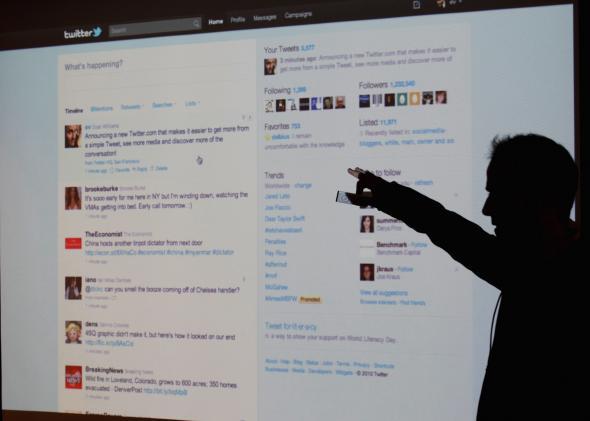At last, science has answered the most pressing question of our age: What does it mean when someone favorites your tweet?
A team of intrepid researchers from Germany and the UK surveyed 606 Twitter users to arrive at a definitive conclusion—or rather, 25 definitive conclusions. Yes, there are exactly 25 distinct reasons why people favorite tweets, according to this exhaustive qualitative analysis.* Here are all 25, in order of their popularity among the survey’s respondents.
- They liked your tweet for subjective reasons (e.g., because it was funny)
- They’re bookmarking it for future use (e.g., to read the attached article)
- They found it topically relevant
- It reflected their own opinion
- They agreed with it but didn’t want to say so publicly
- It evoked in them a subjective emotional response (e.g., it made them feel special)
- It contained relevant multimedia content
- They really liked it, but not for any specific reason
- They’re bookmarking it as a memento
- They found it objectively emotional
- They were mentioned in it
- They liked it for objective reasons
- They’re signaling that they liked it, but not enough to retweet it
- You’re a celebrity
- They found it relevant to their current situation
- It’s their way of engaging in conversation
- They’re trying to engage others in it
- They’re trying to win a commercial competition (e.g., a ticket giveaway)
- They’re bookmarking it for a specific anticipated future need (e.g., to add to a recipe book)
- You’re their friend or lover
- You’re a member of their family
- They favorited it by accident
- They’re signaling that they liked it, and they consider favorites more meaningful than retweets
- They’re trying to win a non-commercial competition (e.g., they’re Mike Isaac)
- They think the act of favoriting a tweet will help them remember it
Six respondents also admitted to favoriting things on Twitter for no reason at all, which just might be the most postmodern thing I’ve ever heard.
As impeccable as the researchers’ methodology may be, I fell compelled to add one small caveat to the otherwise gospel-like accuracy of this taxonomy. While the survey included 606 Twitter users, only 395 of these people were even aware that the favorite button existed. And of those, only 290 had ever used it. As a result, some of the reasons on the list above were cited by only a small handful of respondents. It seems likely, then, that you’d get quite a few more reasons if you expanded the sample size.
Indeed, journalists who have attempted their own taxonomies in the past without the aid of formal surveys have come up with several reasons not cited by anyone in the study. Time’s Jessica Roy, for example, identified and described the flirt fav, the hate fav, the passive-aggressive fav, the sub fav, and the diplomatic fav. The Wire’s Rebecca Greenfield added the practical hate-fave, in which one favorites a tweet in order to remember to make fun of it later. (One could argue, however, that this is merely a subcategory of reason 19 in the official list above.) And The Atlantic’s Megan Garber mounted a strong case on behalf of the farewell fave, which occurs when one wants to terminate or leave a conversation without just straight-up ghosting.
To these I’d add one more:
Now if only science could solve the mystery of the Facebook poke.
*The authors assert in their introduction that they are about to provide a taxonomy of 25 distinct reasons, which makes for a catchy headline even though it’s difficult to discern from the paper itself exactly how they arrived at that number. This nifty Washington Post graphic purports to show all 25, but proceeds to list 30, by my admittedly inexpert count.
For purposes of this blog post, I’ve taken the researchers’ word that there is in fact a way to pick out precisely 25 reasons from the rather eccentrically numbered list provided in Figure 2, and I’ve done my best to pick out just those 25. Not 24. Not 26. Certainly not 27, unless you’re counting sub-reasons B1.1 and B1.2 in addition to sub-sub-reasons B1.1.1, B1.1.2, B1.2.1, and B1.2.2, which I believe would be a grievous error. It is possible, however, that I’m wrong and we are meant to count the sub-reasons but not the sub-sub-reasons, in which case we’re down to 24, but then if we add “no specific reason” … oh, never mind.
Previously in Slate:
